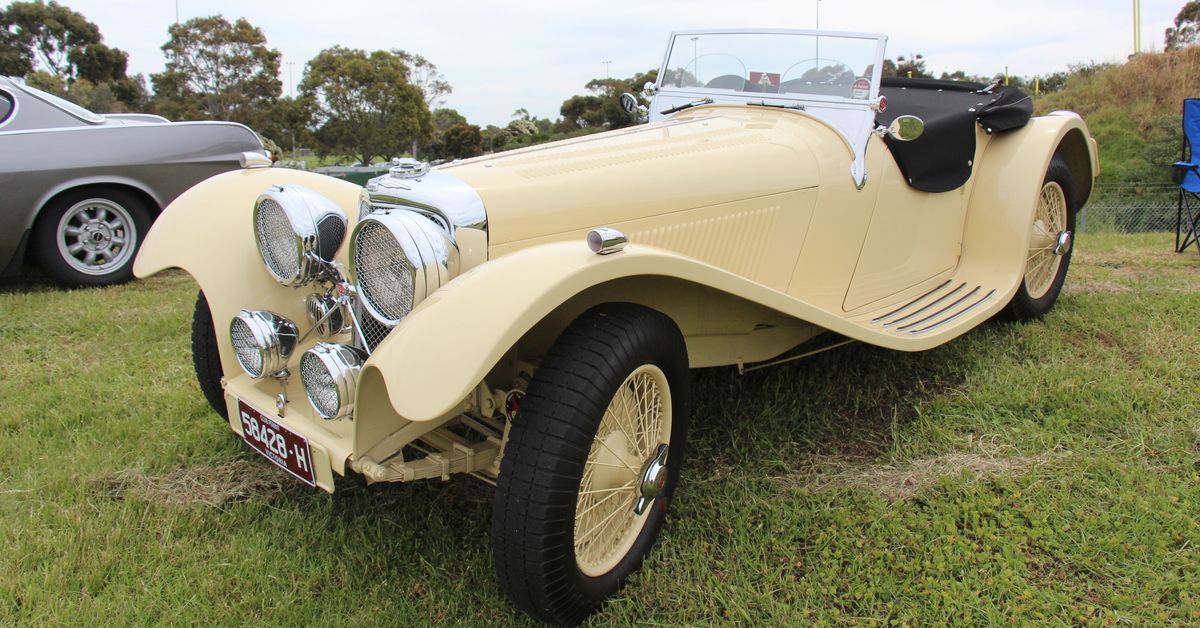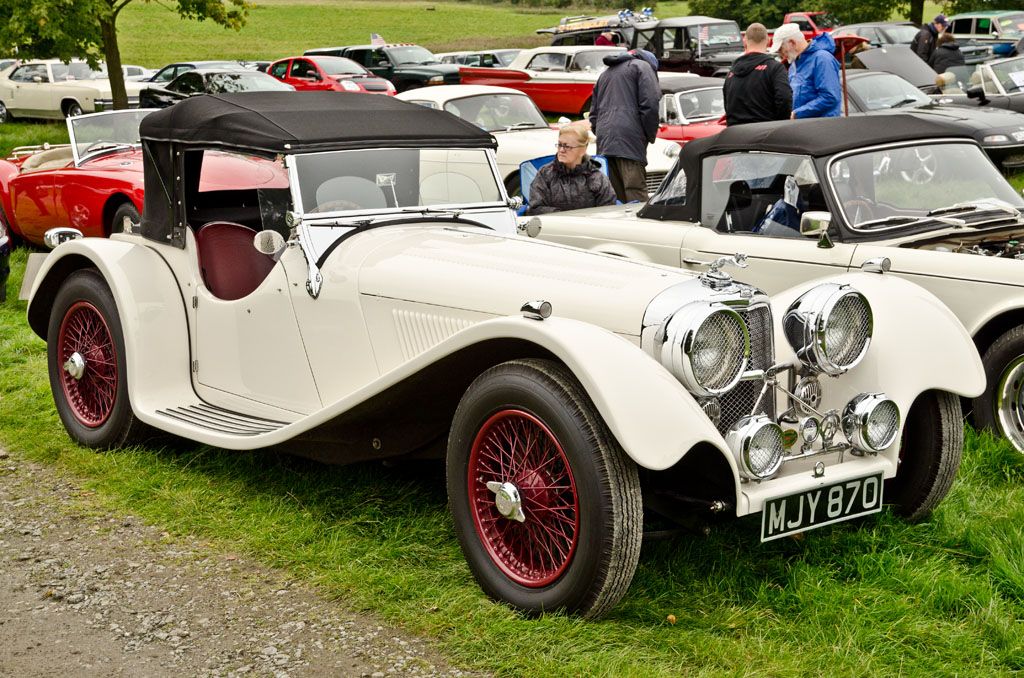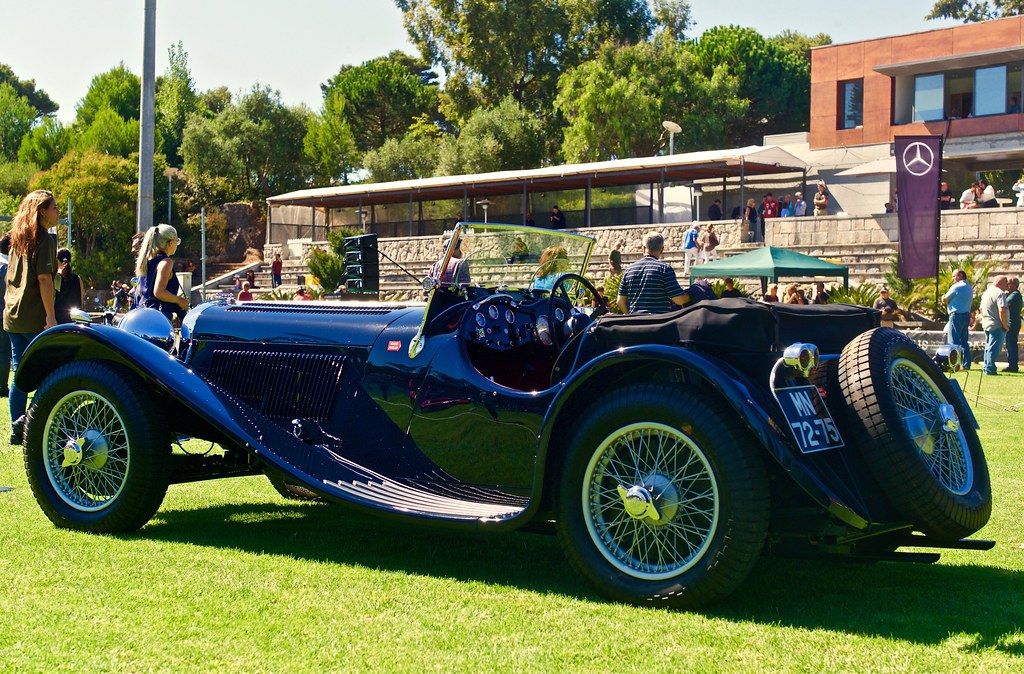There is a certain elegance exhibited by the classic cars of the 1930s. In the early days of the automobile, when car design was still in its infancy, aesthetic considerations could be overlooked in favor of the much more pressing issues of functional engineering. By the '30s, however, cars were sporting sleek lines and flowing curves. One classic example of such beautiful design is the SS Jaguar 100 (a.k.a Jaguar SS100).
The SS100 has become a prized collector's piece. In addition to its gorgeous styling, the car was a true sports car. Its light weight, powerful engine, and remarkably low price (when new) made it a hit with gearheads in England and abroad, and the car was a successful racer at rallies across Europe. However, despite its popularity, the number of Jaguar 100s produced was very low.
Performance and looks that have generated a well-deserved high demand coupled with this low supply have caused prices to rise significantly, placing the Jaguar 100's price in the hundreds of thousands of dollars.
A Closer Look At The Classic Jaguar SS100
Although the name of the SS Jaguar 100 might be a bit confusing, the car was built by what is today known as Jaguar. When the company was founded, though, it was known as SS, a reference to the Swallow Sidecar company of which it had been a part. Jaguar was chosen as the name for a line of sports cars from the company. In the '40s, SS adopted the name of popular series of models as the new company name in order to avoid any confusion or association with the Nazi Schutzstaffel. The marketing department presumably decided that ad campaigns featuring the line WAIT! THE "SS" IS COMING wouldn't go over quite so well in post-war Britain as they had in 1931.
The Jaguar 100 was introduced in 1936. The successor to the SS 90, it originally featured a 2.5 liter engine. The SS 90 was so named for its purported top speed of 90 mph, and the improved Jaguar 100 was similarly named for its claimed ability to break the three digit barrier. However, Autocar tested the Jaguar and found that it topped out at 95. The figure was still impressive, as was the 13.5 second 0 to 60 time.
In 1938, however, displacement increased in the new 3.5 liter models. The new six cylinder beasts could produce upwards of 125 horsepower, according to the Simeone Foundation Automotive Museum, which has one in its collection. The added muscle propelled the Jaguar up to its promised top speed of 100 mph and dropped the 0 to 60 time down to 10.5 seconds. The car was also reliable, a major asset to racers especially in the early days of motorsport, while its 8 foot and 8 inch wheelbase kept it nimble and quick through the corners.
Unfortunately, the advent of World War Two put an end to production of the Jaguar 100. The run was successful but short. According to DriveTribe, only 198 of the 2.5 liter models hit the roads. The 3.5 liter model saw even fewer produced. Only 116 examples were ever made. The vast majority of Jaguar 100s stayed at home in Britain, although approximately 50 were shipped overseas for international sales. In its post-war iteration, Jaguar went on to produce classics like the C-type and E-type, but the SS Jaguar 100 remains a rare gem for collectors of interwar sportscars.
The Cost Of A Classic Jaguar SS100
When it went on sale new in the '30s, the Jaguar 100 was priced at £445 for the 3.5 liter model. The 2.5 liter sold for a hundred pounds less. When adjusted for inflation, the 3.5 liter price comes out to just over £30,500 today or a hair over $42,000. Unfortunately for buyers, appreciation has outpaced inflation. If you can find one of the original 314 examples of the SS Jaguar 100, you can expect to pay anywhere from $150,000 to over $1,000,000, depending on condition.
The $1 million figure is certainly high, though, representing an extraordinary example at the high end of the valuation calculated by ConceptCarz based on 39 recent auction sale prices. Most examples of the Jaguar 100 will run you somewhere in the half- to three quarters million dollar range, with ClassicDriver.com listing a 1938 3.5 liter model at $649,967 and a 1937 2.5 liter model at $590,337. These prices are still far from cheap, and they make the Jaguar 100 one of the most expensive pre-war cars around.
The Alternatives
If you don't have several hundred thousands of dollars on hand to spend on an original SS, you aren't completely out of luck. There are a number of replicas that have been built which may be had for more affordable prices. A number of companies have produced the replicas over the years, and several of these cars are available for sale used. Hemmings currently has examples going for $13,900 and $8,000, a steal compared to the $425,000 original listed alongside them.



